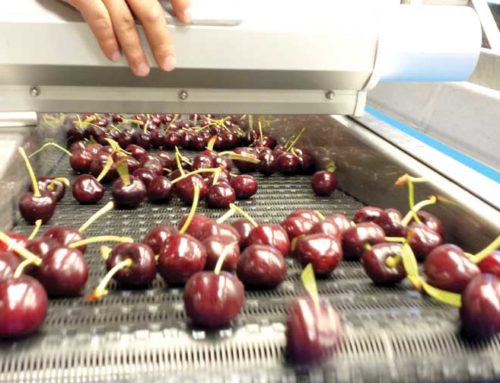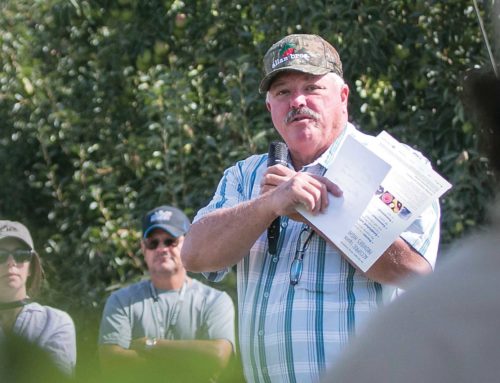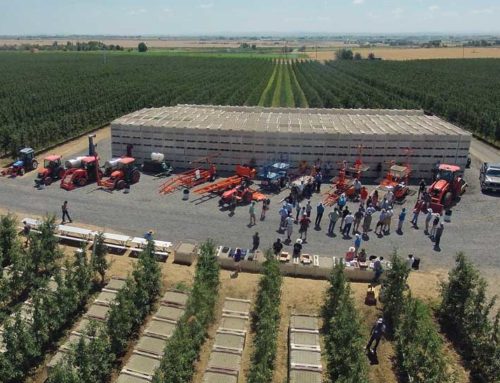Before planting a new apple variety, there are several questions growers should ask themselves, Winfield, B.C., orchardist Russell Husch suggested during the B.C. Hort Forum in Penticton, British Columbia, Canada:
Are you ahead of the pack?
“If you want to be in that mode, there are benefits, but there are a lot of costs associated with that.”
Who is going to sell the fruit?
If the grower’s existing sales agency is going to sell the fruit, does it have the customers to take the new product? If the grower decides to do it, are they prepared to do the leg work? They’ll need to meet the buyers and understand their requirements.
Who will do handling and shipping?
“For most of us on the farm, that’s an extra step we’re not accustomed to,” Husch said.
Is the variety under a club system?
If so, there may be extra conditions attached to it. There might be quality requirements. It might have to be sold through another marketing agency. It might have to be packed by another packer. “There’s lots of good things about clubs, but there’s some negative issues that will change the way you operate,” Husch warned.
What does the market want?
Consumers want crunchy apples, and they must have a long shelf life. A new variety must be unique in appearance because it will have to compete not only against other apple varieties, but other fruits. “It’s got to have something that’s different,” Husch said. “It’s not just the taste. It has to have eye appeal and a shelf life longer than grandma.” It also must be exclusive. “If you can find a product that you have some exclusivity with, you’ll find you will open more doors,” he said. This exclusivity is a huge issue. But quality is more important still, he stressed. “You have to grow quality fruit. It may be rare and it may be in short supply, but if you don’t have quality, it’s not going to last long.”
Does the variety fit your operation?
“A lot of us are taking on these new varieties and not taking a long enough look at how this is going to fit into harvest plans. Does this variety require sprays prior to harvest? If you’re going to take on these new ones, what does it do to the other side of your operation?” Husch asked.
What training system will you use?
Assuming that returns for new varieties will eventually decline, growers need to decide at the beginning of the planting process on a training system that is efficient and generates high production of large fruit with less labor input. For example, Gala is a naturally small apple. The tree training system and rootstock can impact fruit size. The new planting should also be designed for quick change. “If you’ve made mistakes in the past, you will always be looking for a system to fix mistakes quickly,” Husch said. “You’re going to make mistakes. It’s inevitable in this changing world we’re in today.
Is the variety grower friendly?
Extra sprays or specialty picking add to costs. “For most of us over the long term, that doesn’t work,” Husch said.
Is the variety as advertised?
“I don’t know how many times I’ve looked at glossy brochures and catalogs and found when I got the product it wasn’t the same,” he said. “As producers, we have to do a better job of researching the products. Talk to more growers and researchers about what are the real attributes.”
Where is the variety in the marketing cycle?
“If you’re looking at a new product for your operation or your area, it might be a new variety, but if it’s peaking, maybe you should not be investing in that apple,” he said. “That market cycle’s extremely important when you’re planting a new variety.” Husch concluded by quoting hockey player Wayne Gretzky, who advised “Go where the puck’s going to be.” Look for something that’s out there today that people aren’t growing, that meets your requirements, and that’s what the market wants, he advised. Husch’s off-the-cuff recommendations for varieties to plant in British Columbia are: Ambrosia, Aurora, Nicola (SP440), SP293, and possibly Honeycrisp and McIntosh for growers who have good sites for them.






Leave A Comment